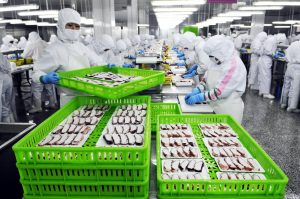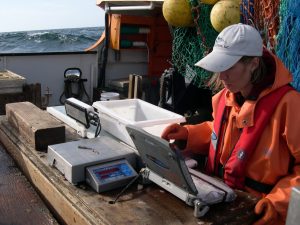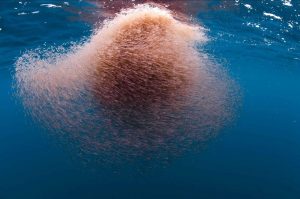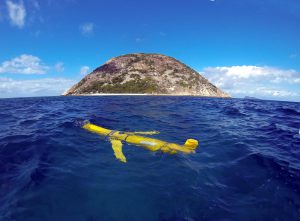Seafood imported into China is mostly processed and re-exported to other countries, making it harder to track the origin of catches, according to a recent study published in the academic journal Science.
This conclusion also counters the commonly held belief that growing Chinese appetites are the main driver of falling fish stocks around the world. “It’s a narrative that is not true,” said Frank Asche, a fisheries economist at the University of Florida and lead author of the study. Instead, he said, fish eaten domestically is mainly farmed in aquaculture ponds.
74.9%
of China’s seafood imports are ultimately sold to other markets
Using data from the Food and Agriculture Organization, Asche and other researchers from the United States and Norway found that an estimated 74.9% of China’s seafood imports are ultimately sold to other markets.
But China’s re-exporting approach facilitates the mislabelling of catches that can mask unsustainable practices. This makes it harder to identify seafood caught from illegal, unreported, and unregulated fishing, according to Asche.
China is also the world’s largest distant-water fishing nation, as well as the largest seafood consumer, importer, and exporter by volume. The country accounts for 18% of global catches and is often criticised for overfishing, one of the gravest threats to oceanic wildlife.
Distant-water fishing is often plagued by limited transparency and traceability, further exacerbating the issues raised by the study.
“It’s a challenge that is faced not only by China. But because of its size as the largest importer and exporter, China is the place where the potential challenge of a lack of traceability is the largest,” said Asche.
Because of its size as the largest importer and exporter, China is the place where the traceability challenge is the largestFrank Asche, lead author of the study
In 2020, to limit overfishing, China imposed two temporary bans on the distant-water fishing of squid populations in parts of the southwestern Atlantic Ocean and eastern Pacific Ocean. Last November, the Ministry of Agriculture and Rural Affairs announced that, “in principle,” it would not allow new distant-water fleets.
The researchers found that some species caught at sea and imported by China, such as tuna, cod, and Alaska pollock, are primarily re-exported. A significant share of cuttlefish and squid is also re-exported. On the other hand, catfish, carp, shrimps, and prawns are mostly domestically produced and consumed inside the country.
Improved preservation technologies and low transportation costs for frozen food in China since the 1990s have allowed the new business model of importing, processing, and re-exporting seafood to thrive, according to the study. It is more competitive than traditional seafood processing, which relies on smaller, local businesses, thereby reshaping small coastal communities around the world. This harms the sustainability of fisheries, said Asche.
The researchers stress that traceability in the global seafood system should improve, suggesting systematic use of blockchain technology and better international coordination.
This article was first published on Sixth Tone. The editor was Kevin Schoenmakers.









